Introduction to Artificial Intelligence (AI)
Artificial Intelligence (AI) refers to the simulation of human intelligence in machines that are designed to think and act like humans. These intelligent systems can perform learning, reasoning, problem-solving, perception, language understanding, and natural language processing tasks. In this article, we comprehensively explore the branches of artificial intelligence in detail. check out Artificial intelligence course online to learn more.
Historical Background
- Early beginnings: Alan Turing and the Turing Test
- Evolution of AI: From symbolic AI to modern machine learning
- Key milestones in AI development
Early Beginnings: Alan Turing and the Turing Test
Alan Turing, a pioneering British mathematician and computer scientist, is often regarded as the father of artificial intelligence. In 1950, Turing published a seminal paper titled “Computing Machinery and Intelligence,” in which he proposed a thought experiment known as the Turing Test. The Turing Test was designed to determine whether a machine could exhibit intelligent behavior indistinguishable from that of a human. In the test, a human interrogator interacts with both a human and a machine without knowing which is which. If the interrogator cannot reliably tell the machine from the human, the machine is said to have passed the test, demonstrating a form of artificial intelligence. This concept laid the groundwork for future Artificial intelligence certification research and development.
Evolution of AI: From Symbolic Artificial intelligence to Modern Machine Learning
The evolution of artificial intelligence can be broadly divided into several phases:
- Symbolic AI (1950s-1980s): Also known as “Good Old-Fashioned AI” (GOFAI), symbolic AI focused on high-level symbolic (human-readable) representations of problems and logic-based reasoning. Early AI systems were rule-based, using a set of predefined rules to make decisions and solve problems. These systems were effective in well-defined domains but struggled with ambiguity and real-world complexity.
- Machine Learning (1990s-present): The rise of machine learning marked a significant shift in AI development. Unlike symbolic AI, machine learning involves training algorithms on large datasets to identify patterns and make predictions. This approach allows AI systems to learn and improve from experience without being explicitly programmed for every task. Key advancements in this era include neural networks, deep learning, and reinforcement learning, which have enabled breakthroughs in areas such as image recognition, natural language processing, and autonomous systems.
- Deep Learning (2010s-present): Deep learning, a subset of machine learning, utilizes multi-layered neural networks to model complex patterns in data. This approach has significantly improved AI performance, particularly in tasks involving unstructured data like images, audio, and text. Deep learning has driven advancements in technologies such as self-driving cars, advanced robotics, and AI-driven medical diagnostics.
Key Milestones in Artificial intelligence Development
- 1956: Dartmouth Conference: The term “artificial intelligence” was coined at this conference, marking the official birth of AI as a field of study.
- 1966: ELIZA: Joseph Weizenbaum developed ELIZA, one of the first chatbots, capable of simulating conversation with humans.
- 1970s: Expert Systems: The development of expert systems like MYCIN, which provided medical diagnoses, showcased the potential of AI in specialized domains.
- 1997: Deep Blue: IBM’s Deep Blue defeated world chess champion Garry Kasparov, demonstrating the power of AI in strategic games.
- 2011: IBM Watson: Watson won the quiz show Jeopardy! against human champions, showcasing advanced natural language processing and knowledge representation.
- 2016: AlphaGo: Google’s DeepMind developed AlphaGo, which defeated world champion Go player Lee Sedol, highlighting the progress in deep learning and reinforcement learning.
- The 2020s: GPT-3 and Beyond: OpenAI’s GPT-3, a powerful language model, demonstrated remarkable capabilities in generating human-like text, marking a new era in AI’s potential for creative and conversational tasks.
Importance of Artificial intelligence
Artificial Intelligence (AI) plays a crucial role in modern society, offering significant benefits across various sectors:
- Enhancing Productivity and Efficiency: AI automates repetitive tasks, allowing businesses to operate more efficiently. For instance, AI-powered systems can handle large volumes of data quickly, freeing up human resources for more strategic activities.
- Revolutionizing Industries:
- Healthcare: AI aids in diagnostics, personalized medicine, and robotic surgeries, improving patient outcomes and reducing costs.
- Finance: AI algorithms enhance fraud detection, optimize investment strategies, and streamline customer service through chatbots.
- Transportation: AI is central to the development of autonomous vehicles, which promise to reduce accidents and improve traffic management.
- AI in Daily Life:
- Virtual Assistants: Tools like Siri, Alexa, and Google Assistant help users manage their daily tasks, providing reminders, weather updates, and more.
- Recommendation Systems: AI drives the recommendation engines of platforms like Netflix, Amazon, and Spotify, enhancing user experience by suggesting relevant content and products.
- Scientific Research and Discovery: AI accelerates research in fields like genomics, climate science, and materials science by analyzing vast datasets and identifying patterns that might be missed by humans.
- Economic Growth: AI has the potential to drive significant economic growth by creating new markets and industries, improving efficiency, and fostering innovation.
The Major Branches of Artificial Intelligence
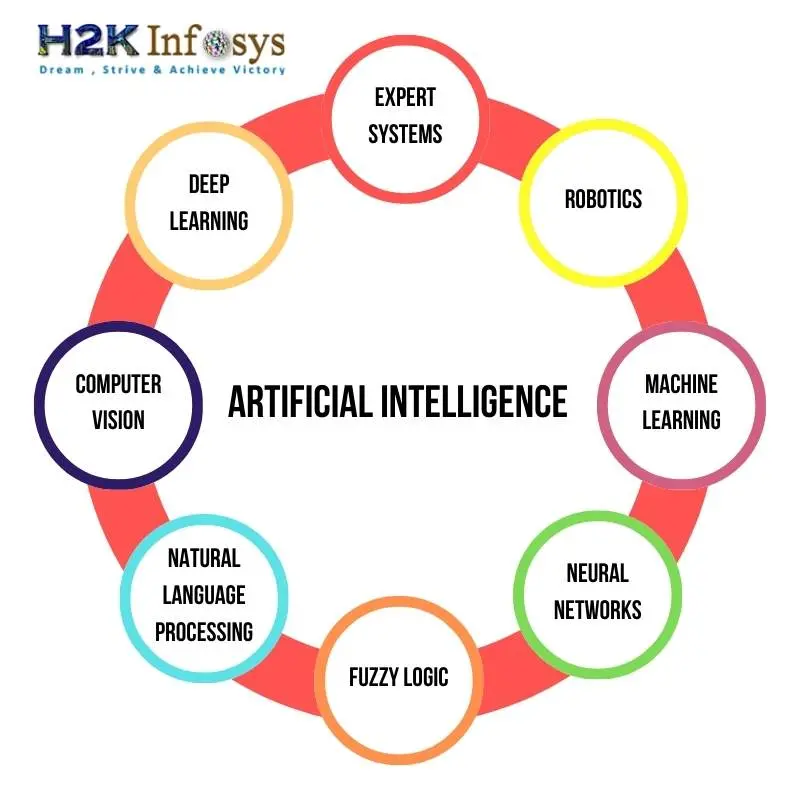
Expert Systems
Definition and Overview
Expert systems are AI programs that emulate the decision-making abilities of a human expert in a specific field.
Components of Expert Systems
- Knowledge Base: Contains domain-specific information
- Inference Engine: Applies logical rules to the knowledge base to derive conclusions
- User Interface: Allows users to interact with the system
Applications of Expert Systems in Artificial intelligence
Medical Diagnosis
Overview:
Expert systems in medical diagnosis assist healthcare professionals in identifying diseases and recommending treatments based on patient data and medical knowledge.
Key Functions:
- Symptom Analysis: Collects and analyzes patient symptoms and medical history.
- Diagnosis Assistance: Provides potential diagnoses based on the analyzed data.
- Treatment Recommendations: Suggests possible treatment options and medication plans.
Benefits:
- Accuracy: Enhances diagnostic accuracy by using extensive medical knowledge bases.
- Efficiency: Speeds up the diagnostic process, allowing doctors to focus on patient care.
- Decision Support: Aids doctors in making informed decisions, especially in complex cases.
Financial Analysis
Overview:
Expert systems in financial analysis help in making informed decisions regarding investments, risk management, and financial planning by analyzing large datasets and applying financial rules.
Key Functions:
- Market Analysis: Evaluates market trends and financial data to provide investment insights.
- Risk Assessment: Identifies and assesses potential financial risks and provides mitigation strategies.
- Portfolio Management: Recommends asset allocation and investment strategies based on financial goals and risk tolerance.
Benefits:
- Precision: Improves the accuracy of financial forecasts and investment recommendations.
- Automation: Automates routine financial analysis tasks, saving time and resources.
- Strategic Planning: Supports long-term financial planning with data-driven insights.
Troubleshooting and Repair
Overview:
Expert systems in troubleshooting and repair are used to diagnose and fix issues in various domains, such as IT systems, manufacturing equipment, and consumer electronics.
Key Functions:
- Fault Diagnosis: Identifies the root causes of problems based on symptoms and error codes.
- Repair Guidance: Provides step-by-step instructions for fixing identified issues.
- Maintenance Planning: Suggest preventive maintenance actions to avoid future problems.
Benefits:
- Efficiency: Reduces downtime by quickly identifying and resolving issues.
- Cost Savings: Lowers repair and maintenance costs by providing accurate diagnosis and repair solutions.
- Expert Knowledge Access: Offers access to expert knowledge in situations where human experts may not be available.
2. Robotics
Definition and Overview
Robotics is an interdisciplinary branch of Artificial intelligence that deals with the design, construction, operation, and application of robots.
Key Components of Robots
- Sensors: Gather information from the environment
- Actuators: Perform actions or movements
- Control Systems: Manage the robot’s behavior
Applications of Robotics in Artificial intelligence
Industrial Automation
Definition and Overview:
Industrial automation involves using robots to perform manufacturing tasks traditionally done by human workers. These robots are programmed to handle repetitive, precise, and hazardous tasks, increasing efficiency and safety in industrial settings.
Applications:
- Manufacturing: Robots assemble products, weld components, and handle materials in factories, enhancing productivity and consistency.
- Packaging and Logistics: Automated systems sort, package, and transport goods in warehouses and distribution centers, optimizing supply chain operations.
- Quality Control: Robots equipped with sensors and cameras inspect products for defects, ensuring high-quality standards.
Benefits:
- Increased production speed and output
- Reduced labor costs and human error
- Enhanced worker safety in hazardous environments
Healthcare
- Surgical Robots:
- Definition and Overview:
Surgical robots assist surgeons in performing minimally invasive procedures with high precision and control. These robots are often controlled by surgeons via a console, allowing for greater accuracy and reduced recovery times for patients.
Applications:
- Minimally Invasive Surgery: Robots like the da Vinci Surgical System enable complex procedures through small incisions, reducing patient trauma and recovery time.
- Microsurgery: Robots perform delicate procedures on small structures, such as nerves and blood vessels, with enhanced precision.
- Rehabilitation Robots:
- Definition and Overview:
Rehabilitation robots aid in the recovery of patients with physical impairments or injuries. They assist in physical therapy by providing consistent, repeatable movements that help patients regain mobility and strength.
Applications:
- Gait Training: Robots help patients relearn walking patterns, providing support and resistance as needed.
- Upper Limb Therapy: Robots assist in exercises to improve arm and hand function in stroke survivors or individuals with other neurological conditions.
Benefits:
- Enhanced precision and control in surgeries
- Improved patient outcomes and faster recovery times
- Consistent and effective physical therapy for rehabilitation
Exploration
- Space Exploration:
- Definition and Overview:
Robotics play a crucial role in space exploration, enabling the study of environments that are too distant or hazardous for human astronauts. Robotic probes, rovers, and landers are designed to withstand extreme conditions and gather valuable data from space.
Applications:
- Mars Rovers: Robots like Curiosity and Perseverance explore the Martian surface, conducting experiments and sending data back to Earth.
- Satellite Maintenance: Robots perform maintenance and repairs on satellites, extending their operational lifetimes.
- Underwater Exploration:
- Definition and Overview:
Robotic systems are used to explore and monitor underwater environments, which are often inaccessible or dangerous for human divers. These robots can operate autonomously or be remotely controlled.
Applications:
- Deep-Sea Exploration: Autonomous underwater vehicles (AUVs) and remotely operated vehicles (ROVs) explore ocean depths, studying marine life and geological formations.
- Environmental Monitoring: Robots monitor water quality, track pollution, and assess the health of marine ecosystems.
Benefits:
- Ability to explore extreme and hazardous environments
- Collection of valuable scientific data from remote locations
- Enhanced understanding of space and underwater ecosystems
3. Machine Learning
Definition and Overview
Machine learning (ML) is a subset of Artificial Intelligence that enables machines to learn from data and improve their performance over time without being explicitly programmed.
Types of Machine Learning
- Supervised Learning: Learning with labeled data
- Unsupervised Learning: Learning with unlabeled data
- Reinforcement Learning: Learning through trial and error
Applications of Machine Learning in Artificial Intelligence
Image and Speech Recognition
Image Recognition:
- Definition: Image recognition is an application in machine learning in AI where algorithms are trained to identify objects, people, text, and actions within images.
- How It Works: Convolutional Neural Networks (CNNs) are commonly used for image recognition due to their ability to capture spatial hierarchies in images through layers of filters.
- Applications:
- Medical Imaging: Detecting tumors, and diagnosing diseases from X-rays, MRIs, and CT scans.
- Security: Facial recognition systems for surveillance and identity verification.
- Retail: Visual search engines that allow customers to search for products using images.
Speech Recognition:
- Definition: Speech recognition involves converting spoken language into text using machine learning models.
- How It Works: Recurrent Neural Networks (RNNs) and Long Short-Term Memory (LSTM) networks are often used to process and understand sequential audio data.
- Applications:
- Virtual Assistants: Siri, Alexa, and Google Assistant use speech recognition to understand and respond to user commands.
- Transcription Services: Automatically transcribing spoken content in meetings, interviews, and broadcasts.
- Accessibility: Assisting individuals with disabilities by providing voice-operated controls and interfaces.
Predictive Analytics
Definition:
- Predictive analytics uses historical data, statistical algorithms, and machine learning techniques to identify the likelihood of future outcomes based on past data.
How It Works:
- Machine learning models, such as regression analysis, decision trees, and ensemble methods, analyze historical data to detect patterns and make predictions.
Applications:
- Finance: Credit scoring, fraud detection, and stock market predictions.
- Healthcare: Predicting patient outcomes, disease outbreaks, and personalized treatment plans.
- Marketing: Customer segmentation, churn prediction, and targeted advertising campaigns.
Autonomous Vehicles
Definition:
- Autonomous vehicles, or self-driving cars, use machine learning algorithms to navigate and operate without human intervention.
How It Works:
- Autonomous vehicles rely on a combination of sensors (cameras, LIDAR, radar), real-time data processing, and machine learning models to perceive their environment, make decisions, and control the vehicle.
Applications:
- Transportation: Reducing traffic accidents and improving traffic flow through intelligent navigation systems.
- Logistics: Autonomous trucks and delivery drones optimize supply chain efficiency.
- Ride-Sharing Services: Companies like Waymo and Uber developing self-driving cars to provide safer and more efficient ride-hailing services.
4. Neural Networks
Definition and Overview
Neural networks are computational models inspired by the human brain, consisting of interconnected nodes (neurons) that process information in layers.
Types of Neural Networks
- Feedforward Neural Networks: Simple structure with one-way connections
- Convolutional Neural Networks (CNNs): Specialized for image processing
- Recurrent Neural Networks (RNNs): Designed for sequential data processing
Applications of Neural Networks in Artificial Intelligence
Image and Video Analysis
Overview:
Neural networks, particularly convolutional neural networks (CNNs), have revolutionized the field of image and video analysis by enabling machines to understand and interpret visual data with high accuracy.
Key Applications:
- Image Classification: Identifying objects within images and categorizing them into predefined classes (e.g., recognizing animals in photos).
- Object Detection: Locating and identifying multiple objects within an image, often used in surveillance, autonomous vehicles, and augmented reality.
- Image Segmentation: Partitioning an image into segments for detailed analysis, essential in medical imaging for identifying different tissue types or abnormalities.
- Video Analysis: Tracking objects and detecting events within video streams, used in applications such as traffic monitoring, sports analytics, and video surveillance.
Natural Language Processing (NLP)
- Overview:
Neural networks, especially recurrent neural networks (RNNs) and transformers, have significantly advanced the field of natural language processing by enabling machines to understand, interpret, and generate human language.
Key Applications:
- Language Translation: Automatically translating text from one language to another, with tools like Google Translate utilizing neural networks to improve accuracy and fluency.
- Sentiment Analysis: Determining the sentiment expressed in a piece of text, is widely used in social media monitoring, customer feedback analysis, and market research.
- Chatbots and Virtual Assistants: Enhancing the capabilities of AI-driven assistants like Siri, Alexa, and Google Assistant to understand and respond to user queries more naturally and accurately.
- Text Generation: Creating human-like text based on given inputs, used in content creation, automated news writing, and creative writing assistance.
Game Playing
Overview:
Neural networks have been instrumental in developing Artificial intelligence systems that can play and excel in various games, from traditional board games to complex video games.
Key Applications:
- Board Games: Neural networks, in combination with reinforcement learning, have enabled Artificial intelligence systems like AlphaGo to master complex board games such as Go, chess, and Shogi, often surpassing human champions.
- Video Games: AI agents powered by neural networks can learn to play video games by observing gameplay and receiving rewards, leading to innovations in game development, testing, and player experience enhancement.
- Strategy and Planning Games: Artificial intelligence systems can analyze and make strategic decisions in real-time, as seen in games like StarCraft II, where neural networks are used to manage resources, plan attacks, and adapt strategies dynamically.
5. Fuzzy Logic
Definition and Overview
Fuzzy logic is a form of many-valued logic that deals with approximate rather than fixed and exact reasoning, similar to human decision-making.
Components of Fuzzy Logic Systems
- Fuzzification: Converting inputs into fuzzy sets
- Inference: Applying fuzzy rules to the fuzzy sets
- Defuzzification: Converting fuzzy results back into crisp values
Applications of Fuzzy Logic in Artificial Intelligence
Control Systems (e.g., Temperature Control)
- Overview:
Fuzzy logic is widely used in control systems to manage processes that are inherently uncertain or imprecise. It allows for the design of controllers that can handle vague and ambiguous inputs, providing a more human-like way of decision-making.
Example: Temperature Control
- Traditional Control: Conventional temperature control systems use precise on/off states to regulate temperature, which can result in overshooting and oscillations.
- Fuzzy Logic Control: A fuzzy logic controller can smoothly adjust the heating or cooling output by interpreting temperature variations in degrees of “warm,” “hot,” “cool,” etc. This leads to more stable and efficient temperature regulation.
Decision-Making Systems
- Overview:
Fuzzy logic enhances decision-making systems by allowing them to operate under conditions of uncertainty and partial truth, which is closer to human reasoning.
Applications:
- Financial Analysis: Fuzzy logic can be used to assess investment risks and returns by evaluating imprecise inputs such as market trends, economic indicators, and expert opinions.
- Medical Diagnosis: In healthcare, fuzzy logic systems assist in diagnosing diseases based on symptoms that are not always clear-cut. For example, a fuzzy logic system can evaluate symptoms and medical test results to suggest possible conditions and recommend further tests.
Pattern Recognition
- Overview:
Pattern recognition involves identifying patterns and regularities in data. Fuzzy logic is particularly effective in this domain because it can handle ambiguous and noisy data, making it suitable for complex recognition tasks.
Applications:
- Image Processing: Fuzzy logic algorithms can enhance image analysis by classifying and interpreting pixel data based on degrees of similarity rather than binary distinctions. This is useful in applications like facial recognition, where variations in lighting, expression, and angle need to be accounted for.
- Speech Recognition: In speech recognition systems, fuzzy logic helps in dealing with the variability in human speech. It can interpret different pronunciations, accents, and speech patterns to improve the accuracy of recognizing spoken words and phrases.
6. Natural Language Processing (NLP)
Definition and Overview
Natural Language Processing (NLP) is a branch of AI that focuses on the interaction between computers and humans through natural language.
Key Techniques in NLP
- Tokenization: Breaking text into words or phrases
- Parsing: Analyzing grammatical structure
- Sentiment Analysis: Determining the sentiment expressed in text
Applications of Natural Language Processing (NLP) in AI
Chatbots and Virtual Assistants
- Definition and Overview:
Chatbots and virtual assistants are AI-driven systems designed to interact with users through natural language, providing information, assistance, and performing tasks.
Key Applications:
- Customer Support: Automated chatbots handle customer inquiries, provide information, and resolve common issues, improving efficiency and response times.
- Personal Assistants: Virtual assistants like Siri, Alexa, and Google Assistant help users with tasks such as setting reminders, making calls, and providing weather updates.
- E-commerce: Chatbots assist users in shopping online by recommending products, answering questions, and facilitating transactions.
Benefits:
- 24/7 availability
- Instant responses
- Personalized interactions
Language Translation
- Definition and Overview:
Language translation using NLP involves converting text or speech from one language to another while preserving the original meaning and context.
Key Applications:
- Machine Translation: Tools like Google Translate and DeepL provide real-time translation services for text and speech, enabling cross-language communication.
- Multilingual Customer Support: Businesses use translation technologies to serve customers in multiple languages, breaking down language barriers and expanding their reach.
- Content Localization: Automated translation aids in localizing websites, documents, and multimedia content for different regions, enhancing accessibility and user experience.
Benefits:
- Facilitates global communication
- Supports multilingual access
- Enhances cultural understanding
Text Summarization
- Definition and Overview:
Text summarization is the process of condensing long pieces of text into shorter versions while retaining key information and main ideas.
Key Applications:
- News Aggregation: AI-powered summarization tools provide concise summaries of news articles, allowing users to quickly grasp essential information.
- Research: Academic and research tools use summarization to generate abstracts of lengthy papers, making it easier for researchers to review large volumes of literature.
- Document Management: Businesses utilize summarization to streamline document review processes, extracting key points from reports, emails, and other textual data.
Benefits:
- Saves time
- Enhances information retrieval
- Improves productivity
Additional Branches and Concepts in AI
7. Computer Vision
Definition and Overview
Computer vision is a field of AI that enables machines to interpret and understand visual information from the world.
Techniques in Computer Vision
- Image Classification: Assigning labels to images
- Object Detection: Identifying objects within images
- Image Segmentation: Partitioning an image into meaningful regions
Applications of Computer Vision in AI
Facial Recognition
- Overview:
Facial recognition is a technology that uses computer vision to identify or verify a person’s identity based on their facial features. This involves capturing an image of a face, analyzing key landmarks (such as the distance between the eyes, nose, and mouth), and comparing the data against a database of known faces.
Applications:
- Security and Surveillance: Used for enhancing security measures in public places, airports, and border control by identifying individuals on watchlists.
- Authentication: Provides secure and convenient access control for devices, such as smartphones and laptops, through facial recognition-based login.
- Social Media: Enhances user experience by automatically tagging friends in photos and suggesting connections based on facial features.
Benefits:
- Improves security and access control.
- Streamlines user experiences with automated identification.
- Enhances social media functionalities and user interactions.
Autonomous Vehicles
- Overview:
Autonomous vehicles, or self-driving cars, use computer vision to perceive and understand their environment. This involves processing real-time images and videos from cameras mounted on the vehicle to detect objects, recognize traffic signals, and understand road conditions.
Applications:
- Object Detection: Identifying pedestrians, other vehicles, cyclists, and obstacles on the road to navigate safely.
- Lane Detection: Recognizing lane markings to stay within lanes and execute safe lane changes.
- Traffic Sign Recognition: Interpreting traffic signals and signs to adhere to road regulations and ensure safe driving.
Benefits:
- Enhances road safety by reducing human error.
- Improves traffic management and efficiency.
- Offers mobility solutions for individuals unable to drive.
Medical Imaging
- Overview:
Computer vision in medical imaging involves the analysis of medical images (such as X-rays, MRIs, and CT scans) to assist in diagnosis, treatment planning, and monitoring of diseases. AI-powered systems can detect abnormalities and provide quantitative assessments.
Applications:
- Disease Detection: Identifying signs of diseases such as cancer, tumors, and fractures with high accuracy.
- Image Segmentation: Isolating and analyzing specific regions within medical images for detailed examination (e.g., segmenting organs or lesions).
- Treatment Planning: Assisting doctors in planning surgeries and treatments by providing precise visualizations and measurements.
Benefits:
- Enhances diagnostic accuracy and early detection of diseases.
- Reduces the workload of radiologists and medical professionals.
- Supports personalized treatment plans and improves patient outcomes.
8. Deep Learning
Definition and Overview
Deep learning is a subset of machine learning that uses neural networks with many layers to model complex patterns in data.
Key Concepts in Deep Learning
- Neural Networks: Multi-layer architectures
- Backpropagation: Algorithm for training neural networks
- Transfer Learning: Using pre-trained models for new tasks
Applications of Deep Learning
Voice Recognition
- Definition and Overview:
Voice recognition, also known as automatic speech recognition (ASR), involves converting spoken language into text. Deep learning models, particularly recurrent neural networks (RNNs) and convolutional neural networks (CNNs) play a crucial role in improving the accuracy and efficiency of these systems.
Key Aspects:
- Feature Extraction: Deep learning algorithms can automatically extract relevant features from audio signals, such as phonemes and words.
- Language Models: Advanced neural networks can understand the context and predict subsequent words, enhancing recognition accuracy.
- End-to-End Models: Modern deep learning approaches can handle the entire voice recognition process from raw audio input to text output without the need for separate preprocessing steps.
Applications:
- Virtual Assistants: AI-powered assistants like Siri, Google Assistant, and Alexa rely on voice recognition for user interactions.
- Transcription Services: Automated transcription tools convert spoken content in meetings, interviews, and lectures into written text.
- Accessibility: Voice recognition technologies help individuals with disabilities interact with devices and access information through voice commands.
Natural Language Understanding (NLU)
- Definition and Overview:
Natural Language Understanding (NLU) is a branch of natural language processing (NLP) that focuses on enabling machines to comprehend and interpret human language in a meaningful way. Deep learning models, particularly transformers and attention mechanisms, have significantly advanced NLU capabilities.
Key Aspects:
- Contextual Understanding: Deep learning models can grasp the context and nuances of language, including idiomatic expressions and varying tones.
- Sentiment Analysis: AI systems can analyze text to determine the sentiment or emotional tone, useful for customer feedback analysis.
- Question Answering: Advanced NLU models can understand and respond to queries with accurate and contextually relevant answers.
Applications:
- Chatbots and Virtual Assistants: AI-driven chatbots use NLU to provide accurate responses to user queries and improve customer service.
- Language Translation: Tools like Google Translate use deep learning for more accurate and context-aware translations.
- Content Moderation: Automated systems analyze and filter harmful or inappropriate content in social media and online platforms.
Advanced Game AI
- Definition and Overview:
Advanced game AI leverages deep learning to create more sophisticated, adaptive, and realistic behaviors in non-player characters (NPCs) and game environments. This enhances the gaming experience by making interactions more immersive and challenging.
Key Aspects:
- Reinforcement Learning: AI agents learn optimal strategies through trial and error by interacting with the game environment and receiving feedback based on their performance.
- Procedural Content Generation: Deep learning algorithms generate dynamic and personalized game content, such as levels, quests, and challenges.
- Behavior Modeling: AI models simulate human-like behaviors and decision-making processes, making NPCs more believable and engaging.
Applications:
- Strategy Games: AI opponents in games like chess, Go, and real-time strategy games exhibit advanced strategic planning and adaptability.
- Action and Adventure Games: NPCs demonstrate complex behaviors, such as teamwork, strategic movement, and adaptive responses to player actions.
- Game Development: AI-driven tools assist developers in creating more realistic and interactive game worlds, reducing development time and costs.
9. Evolutionary Computation
Definition and Overview
Evolutionary computation is a subfield of AI that uses mechanisms inspired by biological evolution, such as reproduction, mutation, recombination, and selection.
Techniques in Evolutionary Computation
- Genetic Algorithms: Optimization algorithms based on natural selection
- Evolutionary Strategies: Optimization techniques using mutation and selection
- Genetic Programming: Evolving programs to solve problems
Applications of Evolutionary Computation in AI
Optimization Problems
- Definition and Overview:
Optimization problems involve finding the best solution from a set of possible solutions, often under constraints. Evolutionary computation uses algorithms inspired by natural evolution, such as genetic algorithms, to solve these problems by iteratively improving candidate solutions.
Applications:
- Resource Allocation: Efficiently distributing resources in industries like logistics, manufacturing, and telecommunications.
- Scheduling: Optimizing schedules for tasks, such as in airline crew scheduling or job shop scheduling in manufacturing.
- Route Planning: Finding optimal paths for transportation networks, including vehicle routing and network design.
Benefits:
- Flexibility: Capable of handling complex, multi-modal, and multi-objective optimization problems.
- Adaptability: Can adapt to changing problem landscapes and constraints.
Machine Learning
- Definition and Overview:
In machine learning, evolutionary computation can be used to optimize the performance of models and algorithms. This involves tuning hyperparameters, feature selection, and evolving neural network architectures.
Applications:
- Hyperparameter Optimization: Automatically finding the best hyperparameters for machine learning models, such as learning rates, tree depths, and number of layers.
- Feature Selection: Identifying the most relevant features for training machine learning models, improving model performance and reducing computational cost.
- Neural Architecture Search (NAS): Evolving the structure of neural networks to discover architectures that yield better performance on specific tasks.
Benefits:
- Automation: Reduces the need for manual trial-and-error in model tuning and design.
- Efficiency: Enhances model performance and generalization by optimizing key parameters and architectures.
Automated Design
- Definition and Overview:
Automated design involves using evolutionary algorithms to create optimized designs for various applications, ranging from engineering to art. This process leverages the principles of natural selection to evolve designs that meet specific criteria and constraints.
Applications:
- Engineering Design: Developing optimized designs for components and systems in aerospace, automotive, and civil engineering.
- Art and Creativity: Generating novel designs for art, music, and other creative fields by evolving aesthetic and functional properties.
- Product Development: Optimizing product features and configurations to meet user requirements and market demands.
Benefits:
- Innovation: Facilitates the discovery of innovative and unconventional design solutions that might not be found through traditional methods.
- Customization: Allows for the creation of tailored designs that meet specific needs and preferences.
10. Knowledge Representation and Reasoning
Definition and Overview
Knowledge representation and reasoning (KRR) involve how knowledge can be represented symbolically and manipulated in an automated way by reasoning systems.
Key Techniques in KRR
- Ontologies: Formal representations of a set of concepts and their relationships
- Semantic Networks: Graph structures representing knowledge
- Rule-Based Systems: Systems using rules to derive conclusions
Applications of Kernel Ridge Regression (KRR) in AI
Expert Systems
- Function: Expert systems simulate the decision-making ability of a human expert.
- KRR Application: Kernel Ridge Regression helps in developing accurate prediction models for these systems. By mapping data into a high-dimensional space, KRR can identify complex patterns and relationships, enhancing the decision-making accuracy of expert systems.
Semantic Web
- Function: The Semantic Web aims to make web data machine-readable, enabling more efficient data retrieval and integration.
- KRR Application: KRR can be used to predict relationships and infer new knowledge from existing web data. By leveraging KRR, the Semantic Web can improve the accuracy of information retrieval, classification, and recommendation systems, making web interactions more intelligent and context-aware.
Natural Language Understanding (NLU)
- Function: NLU involves enabling machines to understand and interpret human language.
- KRR Application: KRR can enhance NLU by improving the performance of tasks such as sentiment analysis, text classification, and language translation. By capturing complex linguistic patterns and structures, KRR helps in building more robust models for understanding and generating human language.
11. Reinforcement Learning
Definition and Overview
Reinforcement learning (RL) is a type of machine learning where an agent learns to make decisions by taking actions in an environment to maximize cumulative reward.
Key Concepts in Reinforcement Learning
- Agents: Entities that take actions
- Environments: The context in which agents operate
- Rewards: Feedback signals for actions
Applications of Reinforcement Learning in AI
Game Playing (e.g., AlphaGo):
- Reinforcement learning (RL) has revolutionized game playing, with AlphaGo being a prominent example. Developed by DeepMind, AlphaGo used RL to master the game of Go, a complex board game with vast possibilities. AlphaGo learned optimal strategies by playing numerous games against itself and analyzing the outcomes. It defeated world champions, demonstrating RL’s ability to achieve superhuman performance in strategic games by continuously improving its decision-making through experience and feedback.
Robotics:
- In robotics, RL is applied to teach robots complex tasks through trial and error. Robots can learn to navigate environments, manipulate objects, and interact with humans by receiving rewards for successful actions. For instance, RL enables robotic arms to learn precise movements for assembling products or performing surgery. This adaptive learning approach allows robots to operate in dynamic and unpredictable environments, improving their efficiency and autonomy over time.
Financial Trading:
- RL is increasingly used in financial trading to develop trading algorithms that adapt to market conditions. By simulating trading scenarios and adjusting strategies based on rewards (e.g., profits), RL algorithms can optimize trading decisions. These algorithms analyze vast amounts of data to identify patterns and make real-time decisions, enhancing the potential for profitable trades. RL’s ability to adapt and learn from market fluctuations makes it a powerful tool for developing sophisticated trading strategies.
12. Cognitive Computing
Definition and Overview
Cognitive computing involves simulating human thought processes in a computerized model. It aims to create systems that can solve complex problems by mimicking human cognitive processes.
Key Features of Cognitive Computing
- Natural Language Processing: Understanding human language
- Machine Learning: Learning from data
- Pattern Recognition: Identifying patterns and trends
Applications of Cognitive Computing
Healthcare (Diagnosis and Treatment Recommendations)
- Cognitive computing in healthcare involves using advanced algorithms and data analysis to assist in diagnosing diseases and suggesting treatment options. These systems can analyze vast amounts of medical data, including patient histories, clinical trials, and medical literature, to provide insights that help doctors make more informed decisions. For instance, IBM Watson for Oncology uses cognitive computing to recommend treatment plans by matching a patient’s medical information with a vast database of medical knowledge.
Customer Service (Chatbots)
- Cognitive computing enhances customer service through intelligent chatbots. These chatbots use natural language processing (NLP) to understand and respond to customer queries in a human-like manner. They can handle a wide range of customer interactions, from answering frequently asked questions to troubleshooting issues. By learning from each interaction, these chatbots continuously improve their performance, providing more accurate and helpful responses over time.
Risk Management
- In risk management, cognitive computing systems analyze large datasets to identify potential risks and recommend strategies to mitigate them. These systems can process unstructured data from various sources, such as news articles, social media, and financial reports, to detect patterns and predict future risks. For example, in financial services, cognitive computing can help detect fraudulent transactions, assess credit risks, and ensure compliance with regulations by continuously monitoring and analyzing relevant data.
The Future of Artificial Intelligence (AI)
Transformative Potential
The future of AI is poised to be transformative, impacting nearly every aspect of our lives and industries. Advances in AI technologies are expected to lead to significant improvements in areas such as healthcare, education, transportation, and more.
Key Trends
AI in Healthcare
- Precision Medicine: AI will enable personalized treatment plans based on genetic and lifestyle data.
- Predictive Analytics: Early detection of diseases through AI-powered diagnostics.
- Robotic Surgery: Increased precision and reduced recovery times.
AI in Education
- Personalized Learning: Tailoring educational content to individual learning styles.
- Intelligent Tutoring Systems: Providing real-time feedback and support to students.
- Administrative Automation: Streamlining administrative tasks and improving efficiency.
AI in Transportation
- Autonomous Vehicles: Self-driving cars and trucks improving safety and efficiency.
- Traffic Management: AI systems optimize traffic flow and reduce congestion.
- Predictive Maintenance: Preventing breakdowns through AI-based predictive maintenance.
AI in Business
- Customer Service: Enhanced customer interactions through AI-driven chatbots and virtual assistants.
- Data Analysis: Improved decision-making through advanced analytics and insights.
- Process Automation: Streamlining business processes and reducing operational costs.
Ethical Considerations
As AI continues to evolve, addressing ethical considerations becomes crucial. Key concerns include:
- Bias and Fairness: Ensuring AI systems are unbiased and fair.
- Privacy and Security: Protecting personal data and maintaining security.
- Job Displacement: Addressing the impact of automation on the workforce.
Emerging Technologies in Artificial Intelligence
Quantum Computing
Definition and Overview:
Quantum computing leverages the principles of quantum mechanics to perform computations far more efficiently than classical computers. While traditional computers use bits (0 or 1) for processing, quantum computers use quantum bits or qubits, which can exist in multiple states simultaneously (superposition) and be entangled with one another.
Impact on AI:
- Speed and Efficiency: Quantum computing has the potential to drastically accelerate the processing speed of AI algorithms, enabling the solution of complex problems that are currently infeasible for classical computers.
- Optimization: Quantum computers can enhance optimization processes in AI, such as improving machine learning model training and solving complex combinatorial problems.
- Data Security: Quantum cryptography could provide unprecedented security for AI systems, protecting data from potential breaches.
Challenges:
- Technical Hurdles: Building stable and scalable quantum computers remains a significant challenge due to issues like qubit coherence and error rates.
- Accessibility: Current quantum computing resources are limited and primarily available in research institutions and specialized companies.
Ethical AI
- Definition and Overview:
Ethical AI refers to the development and deployment of AI systems in ways that are aligned with moral values and societal norms. It encompasses fairness, accountability, transparency, and the minimization of harm.
Key Considerations:
- Bias and Fairness: Ensuring AI systems do not perpetuate or exacerbate biases present in training data. This involves developing methods for detecting and mitigating bias in AI models.
- Transparency: Creating AI systems whose decision-making processes are understandable and interpretable by humans. This includes explainable AI (XAI) techniques.
- Accountability: Establishing clear guidelines for the responsibility and accountability of AI actions, particularly in high-stakes applications like healthcare and criminal justice.
- Privacy: Protecting individual privacy and ensuring AI systems handle personal data responsibly.
Challenges:
- Complexity: Balancing the technical complexity of AI systems with the need for transparency and interpretability.
- Regulation: Developing effective regulatory frameworks that keep pace with rapid AI advancements while fostering innovation.
Human-AI Collaboration
- Definition and Overview:
Human-AI collaboration refers to the synergistic interaction between humans and AI systems, where both complement each other’s strengths to achieve better outcomes than either could alone.
Benefits:
- Enhanced Decision-Making: AI can process vast amounts of data quickly, providing insights and recommendations that help humans make informed decisions.
- Increased Efficiency: Automation of routine and repetitive tasks by AI allows humans to focus on more complex and creative aspects of their work.
- Personalization: AI systems can tailor experiences and services to individual needs and preferences, enhancing user satisfaction and engagement.
Applications:
- Healthcare: Ai training program assists doctors in diagnosing diseases, planning treatments, and personalizing patient care.
- Education: AI-driven tools provide personalized learning experiences and assist educators in managing classrooms.
- Workplace: AI enhances productivity by automating administrative tasks, scheduling, and providing real-time data analysis.
Challenges:
- Trust: Building and maintaining trust between humans and AI systems is critical for effective collaboration.
- Integration: Seamlessly integrate AI systems into existing workflows and ensure they complement rather than disrupt human activities.
- Skills: Equipping the workforce with the necessary skills to work alongside AI and leverage its capabilities effectively.
Final Thoughts
Artificial Intelligence is a rapidly evolving field with vast potential. By understanding its major branches and applications, we can better appreciate the profound impact it has on our world and look forward to its future innovations. learn Artificial intelligence course for beginners to het certified in Ai.
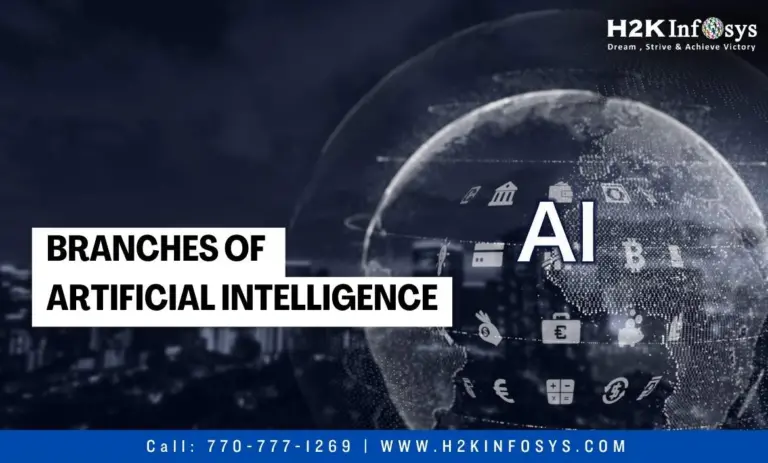

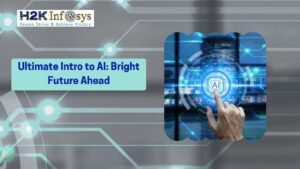

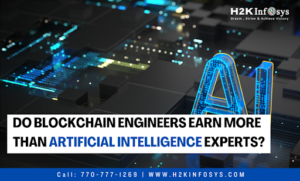
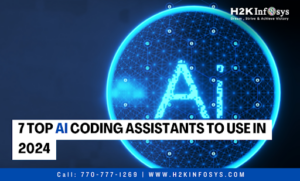
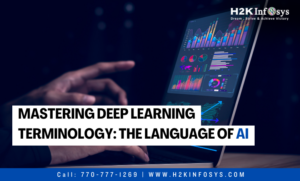
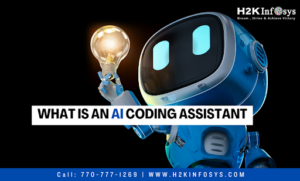

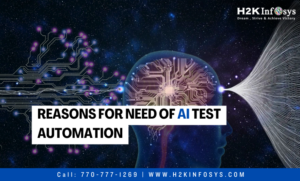
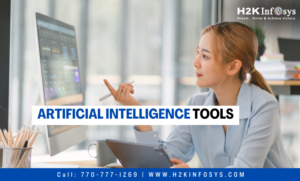












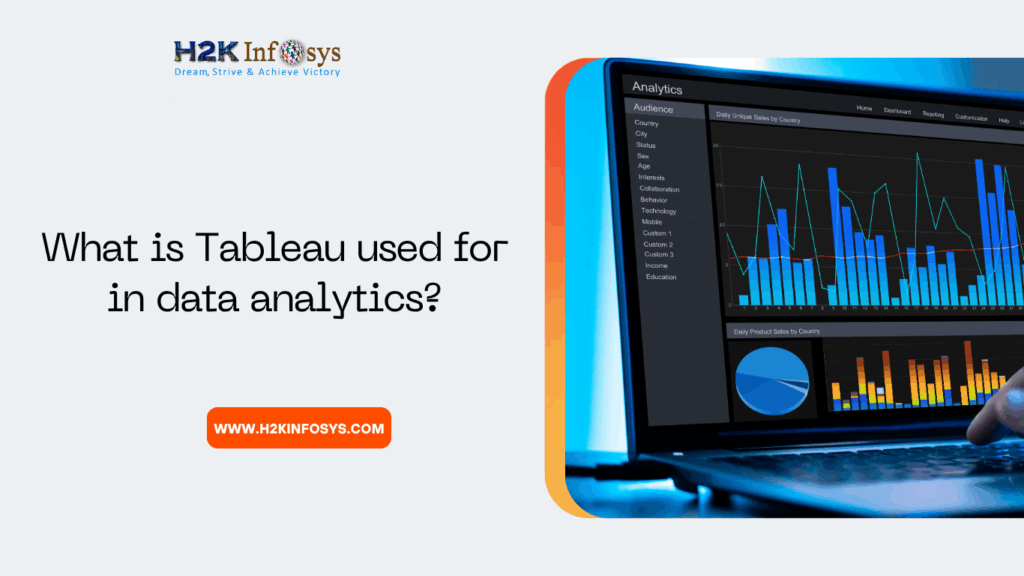


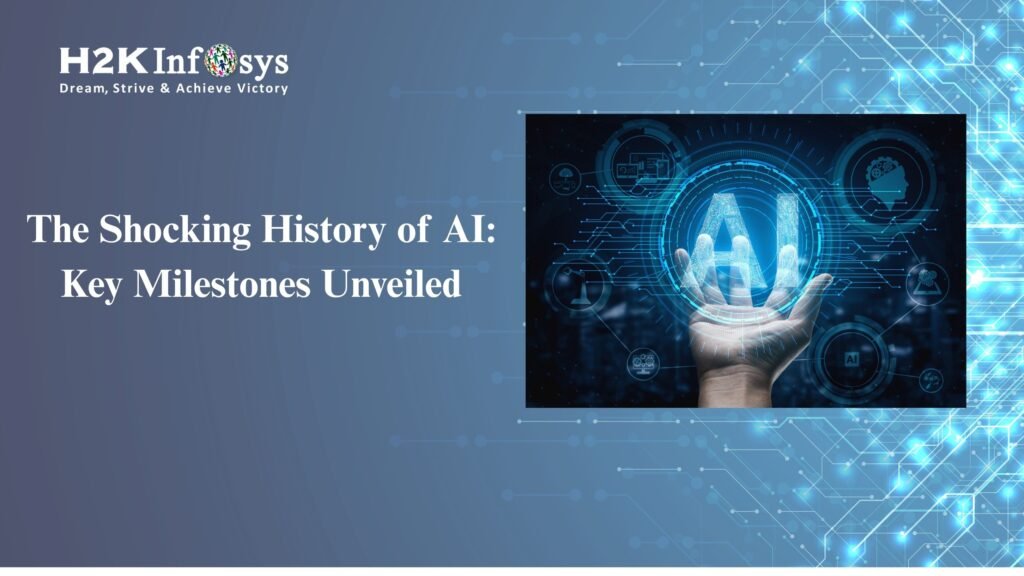




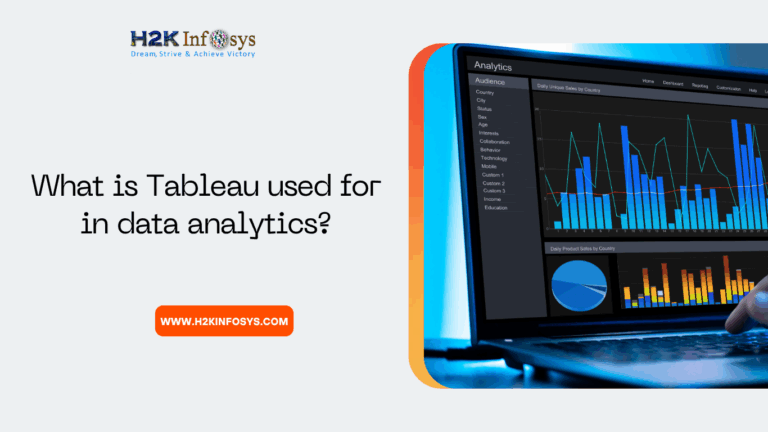

One Response